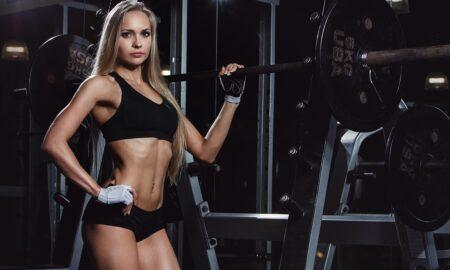A strong track athlete cannot have one training component, such as strength training, interfere with all of the other training components. If the training is too heavy during a high-intensity speed workout, he or she risks central nervous system fatigue and muscle injury.
Sprinters’ training includes speed training, technique training, starts, tempo, plyometrics and strength work, which must all be applied at the right time in the training cycle in the right amount, or volume, and effort, or intensity. That plan is carefully interwoven and designed long before the first workout takes place. The same applies to football and other sports.
The strength-training program may be divided into phases for different purposes. In the early stages a size, or hypertrophy, phase may be followed by a transition phase and, lastly, a strength phase during the off-season. Football players need both size and strength. Speed and quickness are important as well and are part of the training plan. Position-specific technique is also key and is included.
In-season training is different as well because playing the game is the most important goal. The athletes keep their strength during the season by using a lower-volume, higher-intensity program. Too much volume or training to fatigue will require too many days for recovery, and that won’t give other components of their training program a chance, thus negatively impacting their sport. A track athlete who is at maximum-speed training can’t tolerate maximum-strength training volume at the same time. There would be too much fatigue. Sports-training programs require a plan that will manipulate the volume of training—that is, sets and reps—frequency of training, duration of training and intensity of training.
I’ve been criticized in the past for acknowledging that some trainees require manipulation of training factors. The fact remains, those are complex programs that have multiple, interrelated components that must all be taken into consideration. No simple formula applies to all people who touch a weight or a bar.
The complexity of these programs doesn’t mean that the athletes don’t have impressive physiques or strength. Shot and discus throwers typically perform push presses with 400 pounds and bench presses with 500 pounds or more, and they squat usually well beyond 700.
A name from the past that commands respect from throwers today is John Brenner. I wrote about his career in IRON MAN. Brenner didn’t like to lift, although you wouldn’t know it. He performed four lifts only: squat, 800 pounds; bench press, 550 pounds; power clean, 460 pounds; power snatch, 290 pounds. Other examples include sprinter Ben Johnson, who performed the bench squat with 600 pounds for six reps. His teammate Desai Williams had a 370-pound power clean. The men and women in the finals in the 100-meter sprints in the Olympic Games are typically very physically impressive.
So, why do we train? Obviously, for many reasons. Bodybuilders tend to have a high volume of training with moderate intensity, training frequently while rotating bodyparts. A few bodybuilders have followed Arthur Jones’ concept of fewer sets and training to failure. Some have taken Jones’ idea to mean one set only to failure; Mike and Ray Mentzer were credited with popularizing that training style. Bill Bergman, Ph.D., trained with the Mentzers for years and observed that there were multiple warmup sets but limited heavy sets. The lighter sets were called warmup sets and weren’t counted in the set totals. Only the final, heavy sets were.
Powerlifters follow a fairly predictable periodization of eight to 14 weeks of training to reach a peak in their lifts. We can’t remain at a peak forever, of course, so once we get to that point, there’s a rest period followed by another training peak, ideally a bit higher. Olympic weightlifters focus on technique first; explosiveness and the strength will follow. Powerlifting and Olympic weightlifting require progressive plans and cannot take place with single-set training. Track and field, football and other sports also follow a planned, cyclical training program with multiple peaks, off-season and in-season training, integrating speed, agility, explosiveness, cardiopulmonary endurance, anaerobic endurance, flexibility and strength.
The average trainee typically follows one of the bodybuilding methods. Some average trainees excel with a few, heavy sets. They get into the gym, train very hard and get out. That approach can certainly produce strength and size. Average trainees have no need or desire for a sophisticated cyclical, periodized training program integrating multiple components.
Editor’s note: Visit www.SoftTissueCenter.com for reprints of Horrigan’s past Sportsmedicine columns that have appeared in IRON MAN. You can order the books Strength, Conditioning and Injury Prevention for Hockey by Joseph Horrigan, D.C., and E.J. “Doc” Kreis, D.A., and the 7-Minute Rotator Cuff Solution by Horrigan and Jerry Robinson from Home Gym Warehouse, (800) 447-0008, or at www.Home-Gym.com.




















You must be logged in to post a comment Login